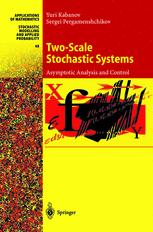

Most ebook files are in PDF format, so you can easily read them using various software such as Foxit Reader or directly on the Google Chrome browser.
Some ebook files are released by publishers in other formats such as .awz, .mobi, .epub, .fb2, etc. You may need to install specific software to read these formats on mobile/PC, such as Calibre.
Please read the tutorial at this link: https://ebookbell.com/faq
We offer FREE conversion to the popular formats you request; however, this may take some time. Therefore, right after payment, please email us, and we will try to provide the service as quickly as possible.
For some exceptional file formats or broken links (if any), please refrain from opening any disputes. Instead, email us first, and we will try to assist within a maximum of 6 hours.
EbookBell Team

4.3
98 reviewsTwo-scale systems described by singularly perturbed SDEs have been the subject of ample literature. However, this new monograph develops subjects that were rarely addressed and could be given the collective description "Stochastic Tikhonov-Levinson theory and its applications." The book provides a mathematical apparatus designed to analyze the dynamic behaviour of a randomly perturbed system with fast and slow variables. In contrast to the deterministic Tikhonov-Levinson theory, the basic model is described in a more realistic way by stochastic differential equations. This leads to a number of new theoretical questions but simultaneously allows us to treat in a unified way a surprisingly wide spectrum of applications like fast modulations, approximate filtering, and stochastic approximation.Two-scale systems described by singularly perturbed SDEs have been the subject of ample literature. However, this new monograph develops subjects that were rarely addressed and could be given the collective description "Stochastic Tikhonov-Levinson theory and its applications." The book provides a mathematical apparatus designed to analyze the dynamic behaviour of a randomly perturbed system with fast and slow variables. In contrast to the deterministic Tikhonov-Levinson theory, the basic model is described in a more realistic way by stochastic differential equations. This leads to a number of new theoretical questions but simultaneously allows us to treat in a unified way a surprisingly wide spectrum of applications like fast modulations, approximate filtering, and stochastic approximation.